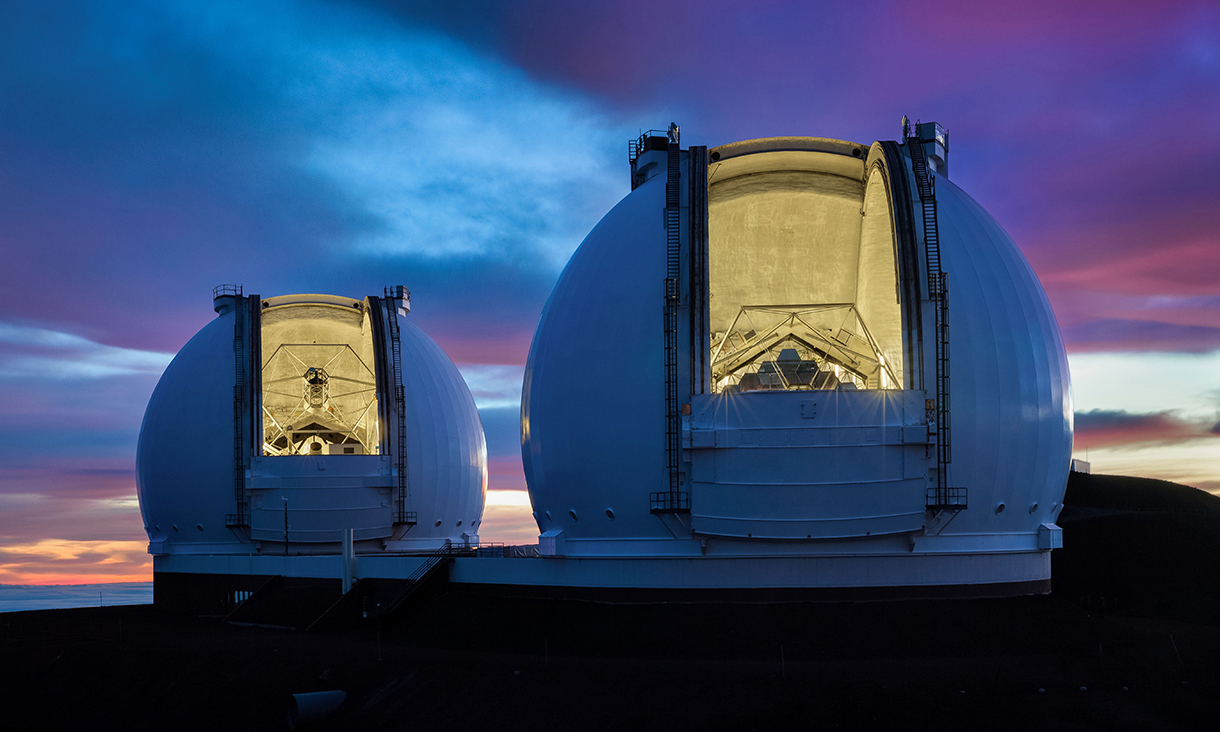Swinburne and W. M. Keck Observatory form historic scientific partnership to unlock new era of space discovery

Located 4,200 metres above sea level on the dormant volcano Mauna Kea, the Keck telescopes have provided some of the most spectacular views of the universe ever obtained.
In summary
- Swinburne has become the first organisation outside the United States to join the W. M. Keck Observatory in Hawaiʻi as a scientific partner
- The new partnership doubles the number of observing nights for Swinburne researchers and will provide Swinburne with a vote in setting science and technology priorities for the Observatory
- The partnership will substantially increase Swinburne’s opportunities to lead high-impact science for the next decade
Swinburne University of Technology has become the first organisation outside the United States to join the W. M. Keck Observatory in Hawaiʻi as a scientific partner.
The new scientific partnership doubles the number of observing nights for Swinburne researchers and will provide Swinburne with a vote in setting science and technology priorities for the Observatory. New instrumentation and software development projects will build capability in cutting-edge technologies at Swinburne and within Australia.
The announcement builds on Swinburne’s 15-year association with the Observatory through a strategic agreement with Caltech under which Swinburne researchers have been able to demonstrate outstanding scientific results. These include:
- Cosmic telescope reveals inner workings of two proto-galaxies
- New stars create space pollution
- Fossil from the Big Bang discovered with giant telescope
Swinburne has an established track record in world-class astronomy and astrophysics and is at the forefront of space and aerospace research and technology, a sector that is projected to be worth US $1.1 trillion by 2040.
Swinburne astronomers can operate the telescopes remotely from a control room more than 9000 kilometres away, built with a generous donation from the Eric Ormond Baker charitable fund.
The formation of the new scientific partnership with Keck Observatory will substantially increase Swinburne’s opportunities to lead high-impact science for the next decade.
“This historic agreement will help to secure Australia’s future as a global leader in astronomy and space technology,” says Swinburne Vice-Chancellor and President, Professor Pascale Quester.
“Space is one of Swinburne’s flagship areas. With deep industry partnerships, our researchers and students are bringing people and technology together to build a better world.
“With access to significantly more observing nights, Swinburne’s astronomers can take leadership roles in high-impact science programs, working with the world’s best scientists at Caltech, University of California, NASA, University of Hawai‘i, and elsewhere, to lead the next generation of major discoveries.”
Keck Observatory Interim Director Rich Matsuda says: "We are excited to welcome Swinburne University of Technology as a scientific partner. Their values, vision, and strong commitment to serving the global astronomy community aligns with our mission, and we look forward to working together on the quest to uncover exciting, fundamental knowledge about universe that has yet to be revealed.”
The United States Ambassador to Australia, Her Excellency Caroline Kennedy offered her congratulations on the new partnership in a video message.
“Australia and the US have such a strong history of partnership in space. We couldn’t do it without Australia, and I can’t wait to see all the discoveries that are going to come from this exciting partnership,” Ambassador Kennedy says.
About W. M. Keck Observatory
The twin Keck I and II telescopes, each 10 metres in diameter, are located on top of Maunakea, at a height of some 4,200 metres above sea level, or roughly ‘halfway to space’ in terms of the Earth’s atmosphere. They are the world’s largest and among the most productive ground-based observational facilities at optical and near-infrared wavelengths.
-
Media Enquiries
Related articles
-

- Student News
- Science
- Sustainability
Introducing tomorrow’s global science communicators
Start Talking is Swinburne’s unique video-based public speaking competition, exclusively for undergraduate students
Monday 08 December 2025 -

- Astronomy
- Technology
- Health
- Science
- University
- Sustainability
- Engineering
Swinburne highly cited researchers reach the top in 12 fields
Ten Swinburne academics have been named on the Highly Cited Researchers 2025 list, released by Clarivate
Tuesday 02 December 2025 -

- Science
- Engineering
Swinburne secures grant to advance next-generation metamaterials research
Swinburne physicist Dr Weibai Li has received a Discovery Early Career Researcher Award from the Australian Research Council
Tuesday 02 December 2025 -

- Technology
- Health
- Science
- University
$1.2m ARC funding to boost national X-ray spectroscopy capability through Swinburne and QUT partnership
Swinburne has secured $1.2 million in the latest Australian Research Council Linkage Infrastructure, Equipment and Facilities scheme round
Tuesday 02 December 2025 -

- Astronomy
- Technology
- Science
- Engineering
Meet Swinburne’s Roo-ver Mission team
Roo-ver will be Australia's first lunar rover, and it’s being designed, built and tested in Australia. Swinburne is playing a key role in the design and construction of Roo-ver, through its involvement in the ELO2 Consortium.
Wednesday 26 November 2025

